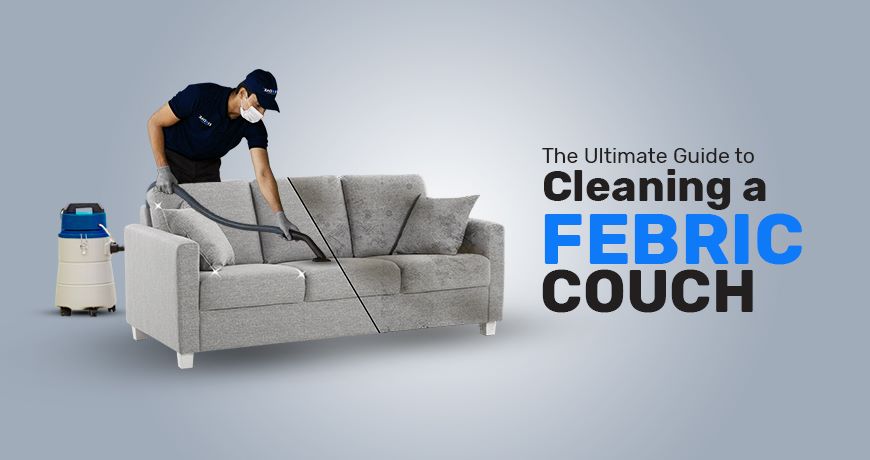
The Ultimate Guide to Cleaning a Fabric Couch: Best Methods and Tips for Spotless Results
Welcome to “The Ultimate Guide to Cleaning a Fabric Couch: Best Methods and Tips for Spotless Results.” If you own a fabric couch, you know how important it is to keep it clean and well-maintained. Over time, dirt, stains, and odors can accumulate on the surface of your couch, diminishing its appearance and freshness.
By following FixDar advice in “The Ultimate Guide to Cleaning a Fabric Couch,” you’ll be equipped with everything you need to maintain a fresh and inviting living space. Get ready to restore your beloved furniture’s beauty with ease!
Preparing Your Couch: Essential Steps Before Cleaning
First, remove any loose debris or crumbs by gently vacuuming the surface of the couch. This will prevent dirt particles from being spread around during the cleaning process.
Next, check for any specific care instructions provided by the manufacturer. Different types of upholstery may require different cleaning methods and products, so it’s important to follow these guidelines to avoid causing harm or discoloration.
If you’re using a commercial cleaner or homemade solution, test it on a small inconspicuous area of the couch first to ensure it doesn’t cause any adverse reactions.
Lastly, make sure to spot treat any stains or spills before proceeding with an overall clean. Use appropriate stain removers based on the type of stain and fabric.
Dry Cleaning vs. Wet Cleaning: Choosing the Right Method for Your Fabric Type
Dry cleaning and wet cleaning are two popular methods used to clean different types of fabrics. Understanding the differences between these methods is crucial in choosing the right one for your specific fabric type.
Dry cleaning utilizes chemical solvents to remove stains and dirt from fabrics without using water. This method is effective for delicate or sensitive fabrics that may shrink, fade or lose their shape when exposed to water. Dry cleaning can be ideal for garments made of silk, wool, cashmere, or those with intricate embellishments.
On the other hand, wet cleaning services involves using water-based solutions and detergents to clean fabrics. It is a more environmentally friendly option as it reduces the use of harsh chemicals. Wet cleaning works well for washable fabrics such as cotton, linen, polyester blends, and synthetic materials.
When deciding which method to choose, consider factors like fabric composition, care instructions on garment labels, and the nature of stains or dirt present. Additionally, consult professional dry cleaners who have expertise in handling various fabric types and determining the appropriate method.
By understanding the distinctions between dry cleaning and wet cleaning techniques along with considering specific fabric requirements; you can ensure proper care and maintenance.
Step-by-Step Guide to Deep Clean your Fabric Couch
Deep cleaning your fabric couch is an essential task to maintain its appearance and prolong its lifespan. Here is a step-by-step guide to help you achieve a thorough deep clean:
Spot Test
Before applying any cleaning solution to the entire couch, perform a spot test on an inconspicuous area to ensure it doesn’t cause any discoloration or damage.
Cleaning Solution
Mix mild detergent or upholstery cleaner with water according to the manufacturer’s instructions. Dip a microfiber cloth into this solution and gently blot stains or soiled areas of the fabric.
Brushing
For more stubborn stains or heavily soiled areas, use a soft-bristle brush in circular motions while applying gentle pressure to lift dirt and grime from the fabric fibers.
Rinse & Blot
After treating stains, rinse out excess detergent by dabbing with a clean damp cloth until no soap residue remains. Blot dry using another clean cloth.
Deodorize
Sprinkle baking soda over the entire surface of your fabric couch and let it sit for at least 15 minutes before vacuuming it off thoroughly—this helps eliminate odors trapped within the fabric fibers.
Drying Time
Allow your freshly cleaned couch ample time to air dry completely before using it again.
Tackling Common Stains and Spills: Expert Tips and Tricks
One key tip is to act quickly. The longer a stain sits, the harder it becomes to remove. Blotting rather than rubbing is also crucial to prevent further spreading or pushing the stain deeper into the material.
Understanding the specific type of stain you’re dealing with is essential for selecting the appropriate product. Different materials require different treatment approaches, so be sure to do your research beforehand.
Additionally, using natural remedies like baking soda, vinegar, or lemon juice can work wonders in removing many types of stains without harsh chemicals.
Of course, prevention is always better than cure. Taking proactive measures such as using coasters on furniture surfaces or applying fabric protectors can help minimize future staining incidents.
By arming yourself with expert tips and tricks for tackling common stains and spills, you’ll be well-equipped to handle any accidental mess that comes your way.


